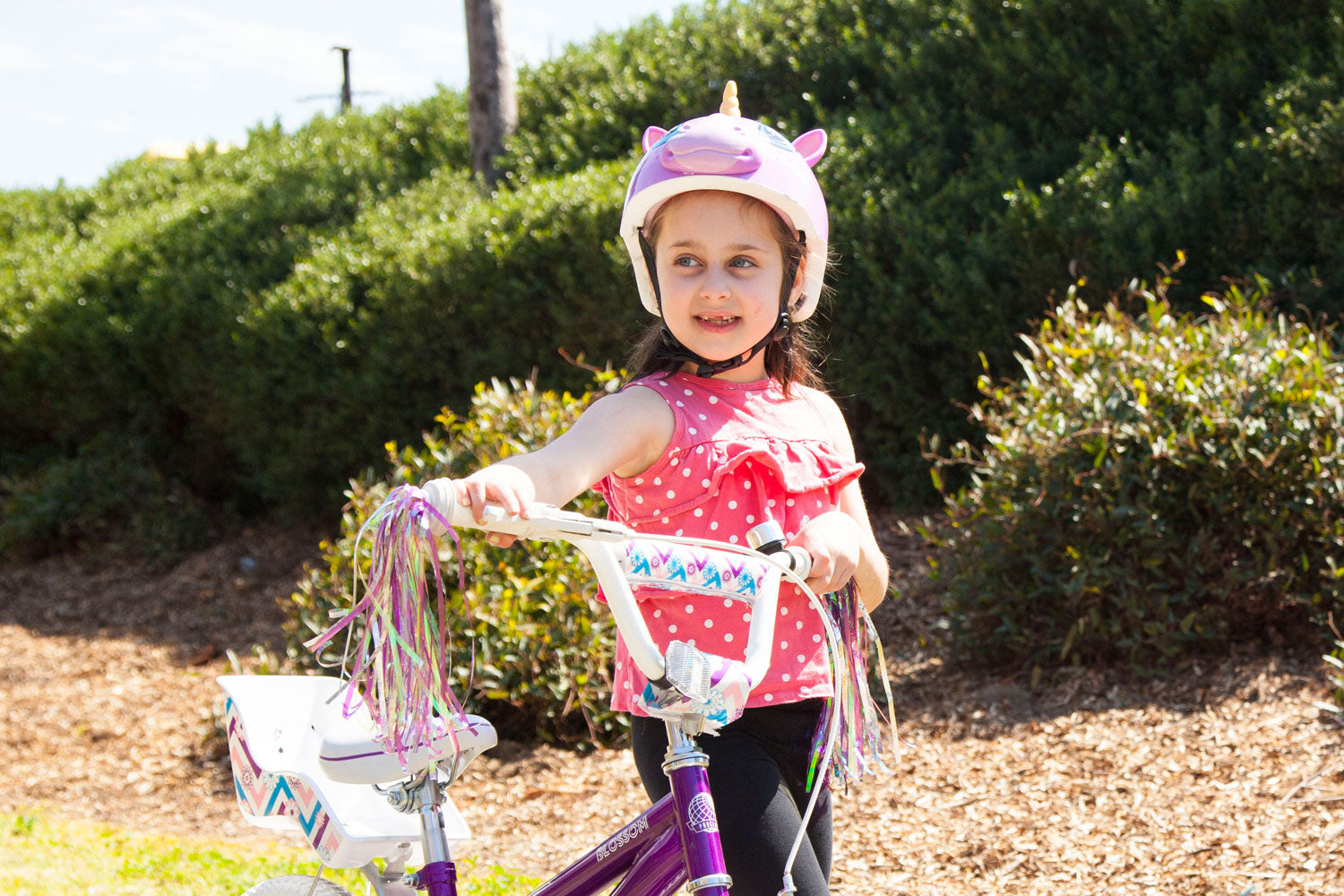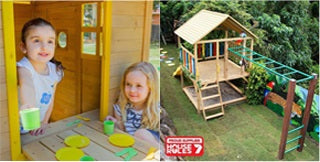The Blog
Bike Safety for Kids

Bike riding is such an important experience for kids to have. Not only does it provide a great outlet for physical exercise and outdoor exploration, but it also develops essential motor skills and coordination, and encourages strong social bonds with friends and family.
That’s why it’s essential to give your kids the best setup possible for a safe and enjoyable ride, so they can enjoy all these benefits without the stress and worry associated with bike-related injuries.
As children learn to ride, it’s crucial to equip them with the right gear, knowledge of road rules and the ability to develop safe riding habits. By taking the necessary precautions and selecting quality bikes, you can provide your children with the confidence they need while cycling.
The Importance of Bike Safety for Children

According to the Australian Institute of Health and Welfare, cycling-related hospitalisations are most common in the 10-14 age group, as kids gain more confidence on two wheels and start to take on greater challenges. While this is all part of the learning curve of riding a bike, we want to encourage precautions that give your child the absolute best protection possible if something does go wrong.
The arm and legs are common areas to suffer a fracture, followed by the head and neck. This is why a well-rounded approach to bike safety is important, involving everything from wearing protective gear, proper visibility, sizing the bike correctly and following road rules. By taking these steps, parents can help ensure their child's safety while creating a fun and empowering experience on two wheels.
Choosing the Right Bicycle for Your Child
Here are some things to keep in mind when selecting a bike for your child:
- Size: A child’s bike should be the appropriate size for their height and leg length. If the bike is too big or too small, it can be difficult to control and lead to accidents. Make sure your child can touch the ground with both feet when sitting on the saddle.
- Features: For younger children or beginners, choose a bike with training wheels or a balance bike to help them develop stability and confidence. For older or more experienced riders, bikes with gears or hand brakes may be appropriate.
- Weight: Choose a lightweight bike for younger riders. A lighter bike is easier for children to handle, especially when learning to ride.
Essential Safety Gear for Young Riders

To ensure that children are fully protected while riding, it’s crucial to equip them with the proper safety gear.
Helmets: A Must-Have
A helmet is the most important piece of safety equipment for any cyclist, especially young riders. Helmets help prevent serious head injuries in case of falls or accidents.
- Fit: The helmet should fit snugly on your child’s head without being too tight or too loose. A well-fitting helmet will stay in place during rides and offer maximum protection.
- Certification: Look for helmets that meet Australian/New Zealand Standard (AS/NZS 2063). A certified helmet ensures the best protection.
- Comfort: Choose a helmet with adjustable straps and ventilation to ensure your child can wear it comfortably for long rides.
Reflective Gear and Clothing
Visibility is critical, especially during low-light conditions or when riding in areas with heavy traffic. Reflective gear helps ensure that your child is seen by drivers and other cyclists, reducing the risk of accidents. Consider reflective vests, which can be worn over clothing to make your child visible from all angles, or applying reflective stickers to the bike frame, helmet and other gear for increased visibility.
Proper Footwear for Safe Riding
Good footwear is essential for safe cycling. Avoid open-toe shoes or sandals, as they can slip off the pedals or leave feet vulnerable in case of falls. Choose closed-toe shoes with a sturdy, non-slip sole, or comfortable, durable runners designed for active wear, which provide support for long rides and prevent slipping.
Teaching Kids the Rules of the Road

One of the best ways to keep kids safe while cycling is to teach them the essential rules of the road. This is also a good opportunity for your child to learn the mechanics of riding on the road, giving them a head start for learning how to drive. By instilling good habits early, they can learn how to ride safely in new and challenging environments. Here are some crucial road rules to teach:
- Look Both Ways: Encourage children to always check for traffic before crossing any road, whether on foot or riding their bike.
- Stop at Traffic Lights: Teach kids to stop at red lights, wait for the green light and look both ways before proceeding. Some intersections will even have dedicated bike traffic lights to look out for.
- Ride on the Left: In Australia, cyclists should ride on the left side of the road/path (unless otherwise signed) and obey traffic signs, just like other vehicles.
- Use Hand Signals: Show your child how to signal turns with their arm to communicate their intentions to other road users.
Supervision and Setting Boundaries
For younger children, stay close by while they’re still learning. Help them practice braking, turning and handling different terrains. Designate specific areas, such as local parks or bike paths, where your child can ride freely and safely. As your child gains confidence and skills, you can allow them to ride with friends or on quiet streets, always maintaining a line of communication.
Regular Maintenance Checks

Routine checks can prevent mechanical issues that might cause accidents. Be sure to check:
- Brakes: Ensure that the brake pads are not worn down and that they function properly before each ride.
- Tyres: Check the tyre pressure and look for any punctures or damage. Properly inflated tyres help improve bike control and reduce the chance of flats.
- Chain: Lubricate the chain regularly to keep it running smoothly and prevent it from snapping while riding.
If any issues arise that you can’t fix yourself, don’t hesitate to bring the bike in for professional servicing.
Encouraging a Culture of Bike Safety at Home
Promoting bike safety at home goes beyond simply telling kids to wear their helmet or follow road rules—it’s about modelling the right behaviour and attitude.
The best way to do this is to lead by example by always wearing your own helmet and obeying traffic rules.
You can also teach kids how to inspect their bikes for issues, like checking tyre pressure and adjusting brakes. This involvement creates a sense of responsibility and will make them better prepared for solo riding. For younger kids, try to incorporate safety practices into bike-related games and activities, reinforcing the importance of safety in a fun way.
When shopping for a bike, trust Progear’s Kids Bikes Collection, which offers a variety of reliable, well-built bicycles designed for maximum safety. Progear’s bikes are crafted to provide comfort, durability and safety for every young rider.
By following these safety tips and instilling responsible habits, you can ensure that your young riders enjoy cycling with peace of mind and confidence, knowing they are protected from common risks.














 Shop now, Pay Later
Shop now, Pay Later








